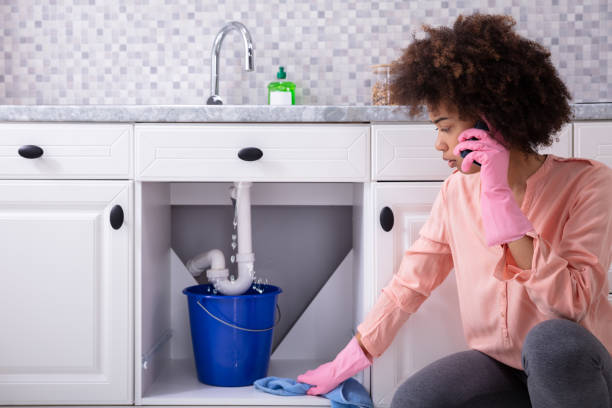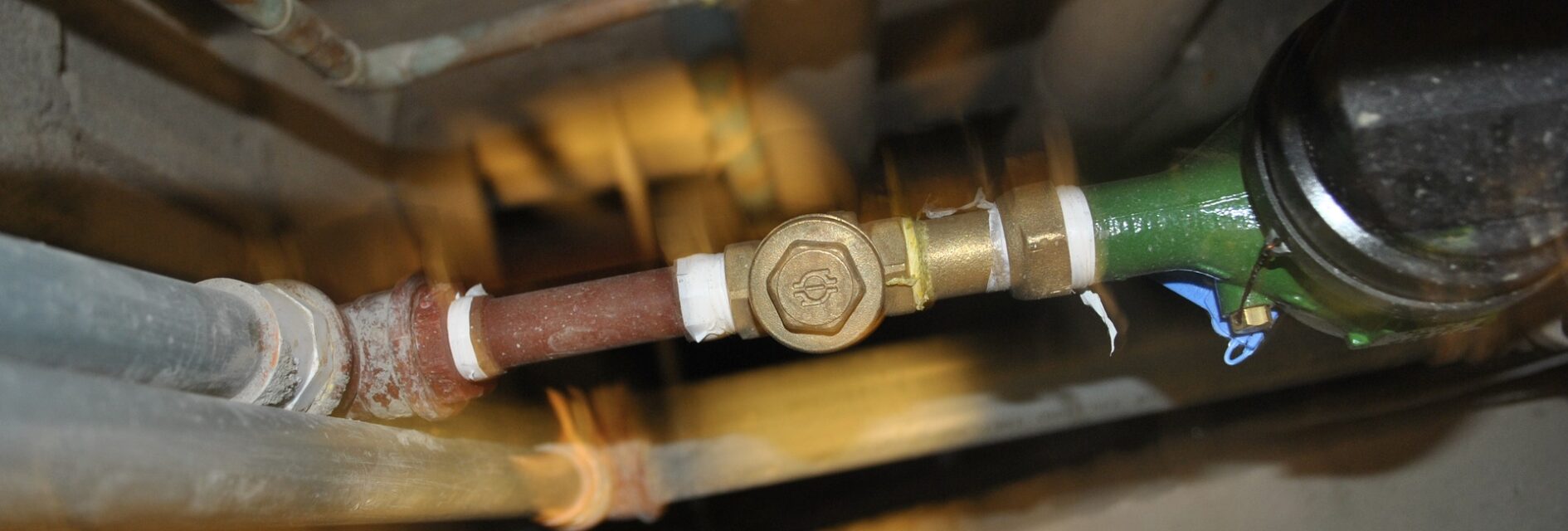Addressing Plumbing Issues in Older Homes: Proven Methods
Addressing Plumbing Issues in Older Homes: Proven Methods
Blog Article
The writer is making a few good pointers regarding Plumbing Problems In Old Homes in general in this post directly below.

Older homes usually feature charm, character, and background, but they can additionally bring a host of pipes issues. Whether you're managing aging pipelines, low water stress, or leaks, recognizing exactly how to resolve these typical troubles is important to maintaining a risk-free and functional home. In this overview, we'll check out the typical pipes challenges dealt with by older homes and provide sensible services to keep your pipes in top shape.
Recognizing Typical Pipes Concerns
Aging Pipes
One of the most usual issues in older homes is maturing pipelines. Depending on the age in which your home was constructed, the pipes may be made from products that have degraded gradually, such as galvanized steel, cast iron, or perhaps lead. These materials can rust, come to be brittle, or establish leakages, causing water damages and potential health hazards.
Low Water Pressure
If you're experiencing low water stress, it could be because of mineral deposits, deterioration inside the pipelines, or old fixtures that are no longer functioning effectively. This can be a significant inconvenience, especially in areas like showers and sinks.
Leaking Pipelines
Leaks are one more frequent problem in older homes, usually caused by corroded or damaged pipelines. Also small leaks can result in considerable water damages, mold and mildew development, and increased water costs if not dealt with immediately.
Obsolete Fixtures
Obsolete pipes components such as taps, commodes, and showerheads not just look old however may likewise be much less effective, prone to leakages, or inappropriate with contemporary pipes standards.
Pipe Corrosion
Corrosion is a common trouble in older pipelines, specifically those made from galvanized steel or actors iron. Rusty pipelines can limit water flow, cause discoloration, and at some point bring about leakages or pipeline ruptureds.
Examining the Problem of Your Pipes
Checking Visible Pipes
Start by inspecting any noticeable pipes in your home, such as those in basements, crawl spaces, or under sinks. Seek indicators of deterioration, leakages, or corrosion, which can show underlying problems.
Checking for Leaks
Look for leakages by checking locations around taps, bathrooms, and under sinks. You can also check your water meter prior to and after a period of no water use to find concealed leaks.
Water Quality Screening
Older pipes can affect the top quality of your water. Conduct a water quality examination to look for pollutants such as lead, rust, or various other pollutants that may be introduced by maturing pipelines.
Solutions for Common Pipes Problems
Replacing Aging Pipelines
If your home has old, weakening pipelines, think about replacing them with modern-day materials like copper or PEX. This can be a significant financial investment, however it will certainly prevent future concerns and enhance the safety and security and dependability of your plumbing system.
Repairing Low Water Stress
To repair low tide pressure, beginning by cleaning or changing old components and eliminating mineral accumulation in the pipes. If the trouble persists, it might be required to change areas of rusty pipelines.
Repairing and Changing Dripping Pipelines
For little leakages, you can utilize pipeline clamps or epoxy putty as a short-term fix. Nevertheless, it's best to change dripping pipelines totally to avoid additional damages.
Upgrading Fixtures
Updating old fixtures to contemporary, water-efficient versions can improve your home's plumbing efficiency and lower water consumption. Seek fixtures with the WaterSense label for the very best effectiveness.
Dealing with Pipe Deterioration
If your pipes are rusted, changing them with corrosion-resistant products like copper, PVC, or PEX is the best remedy. Regular assessments and water top quality maintenance can assist protect against further rust.
When to Call a Specialist
While some plumbing issues can be managed with do it yourself solutions, there are times when it's best to hire an expert. If you're managing significant leaks, comprehensive rust, or are unclear regarding the problem of your pipelines, a licensed plumbing can supply experienced analysis and repair service.
Preventive Upkeep Tips
Normal Inspections
Routinely examine your plumbing system for indications of deterioration. Catching problems early can avoid expensive repairs down the line.
Water Pressure Policy
Ensure your water stress is within the recommended range to stay clear of emphasizing your pipelines and components. A plumber can mount a stress regulatory authority if needed.
Water High Quality Maintenance
Install water filters or softeners if your water high quality is poor. This can secure your pipes and fixtures from damage brought on by tough water or impurities.
Proactive Pipe Substitute
If your home has older pipelines, think about proactive replacement prior to major issues develop. This can conserve you from emergency repair work and water damages.
Conclusion
Dealing with pipes problems in older homes needs a combination of vigilance, preventative maintenance, and prompt upgrades. By recognizing the typical challenges and recognizing when to look for professional aid, you can guarantee your plumbing system remains useful and trustworthy for many years to come.
Common Plumbing Problems in Older Homes
Older homes have a ton of character from the antique brass faucets, clawfoot tubs, and colorful tile to the Dutch doors, transom windows, and archways, there s a lot to love. Unfortunately, that character often includes old plumbing that s past its prime and isn t fit to support modern appliances.
If you own an older home and are suspicious about strange noises (ghosts?), smells, leaks, or frequent clogs in your plumbing, it's possible that your home s old age is to blame.
Learn more about the most common old house plumbing problems, and what can be done to fix them!
What Are the Most Common Plumbing Problems in Old Houses?
Old, corroded piping. Most older pipes are made of material that corrodes and rusts more easily. Even if over the years some of that piping was replaced with better material, the rest may be damaged or repaired with lower-quality material. Though expensive, it may be the best option to re-pipe your plumbing especially if there s rust or lead in your water. Slow drains. This could be the result of many issues, but most likely because of pipe bellies. These are sags in your drainpipes that happen as your home settles and shifts downward over time, putting pressure on your pipes and creating negative slopes. This can restrict water from flowing correctly through them and result in slow drains. Frequent clogging. As you might expect, pipe bellies can also lead to frequent clogging. Another reason for clogging could be due to buildup over time, or blockages from sediment and root growth. Scheduling a drain inspection and drain unclogging service can eliminate this issue. Damaged or failing sewer lines. Old homes are more likely to have foundational shifts and tree root overgrowth. This can put a lot of pressure on and in your sewer lines, leading to damage. Another common reason for failed sewer lines is because of modern appliance upgrades. Newer appliances put more strain on sewer lines, and if your old pipes aren t equipped to handle this, it can result in damage. If you have any wastewater backup, slow drains, or soft spots in your yard, you may need sewer line replacement. Worn or outdated fixtures. Plumbing fixtures old or new aren t built to last forever. Even if your fixtures seem like they re working well, it s best to check the wear on any internal parts. Minor wear and tear over time can lead to more costly leaks and plumbing issues. Our experts can perform a plumbing inspection for any part of your home s plumbing. Improper installations or repairs. Whether your plumbing was installed a hundred years ago, installed incorrectly, repaired incorrectly, or repaired with outdated materials, this can affect the long-term stability of your plumbing. In older homes especially, having your plumbing inspected is vital to preventing damage. What Are Old Plumbing Pipes Made Of?
Galvanized steel. Most often used between the 1930s and the 1980s, this piping material was discovered later in the 1990s to be prone to rust and corrosion, releasing lead into the water, which is dangerous to consume. Copper. Most homes built around the 1960s are likely to have copper piping. Unlike galvanized steel, copper is one of the most durable materials for plumbing pipes. The issue with this material is the risk of lead, which could be present in the piping itself or the solder applied to the joints and fittings. PVC. This material is still used today and was often used in older homes where piping was replaced because it was easy and inexpensive to install. PVC is also very durable, lead-free, resistant to rust and corrosion, and handles high water pressure well. The downside is that hot water can make it warp. How to Fix Plumbing Problems in Old Homes
Have your plumbing inspected. Before you begin or schedule any type of repair, schedule a plumbing inspection. An expert will be able to properly identify all the issues in your plumbing and the best solution to avoid further damage. Get your plumbing repaired or replaced as needed. Depending on the issues found with your plumbing, you may need minor repairs or larger replacements. Make sure these issues are addressed before you tackle any smaller issues. Remove any clogs or buildup. It s likely your old pipes are clogged with debris, mineral buildup, hair, tree roots, and more. Having your drainpipes cleaned will improve overall drainage and help prevent future leaks. Replace old fixtures. Before replacing any fixtures, check with your local plumber first. Not only can new fixtures strain your old plumbing pipes, but installing them incorrectly can lead to costly damage.

I was brought to that write-up about Common Plumbing Problems in Older Homes from an associate on a different blog. Do you know another individual who is fascinated by the subject? Be sure promote it. We truly appreciate reading our article about Plumbing Issues in Older Properties and How to Fix Them.
Call Today Report this page